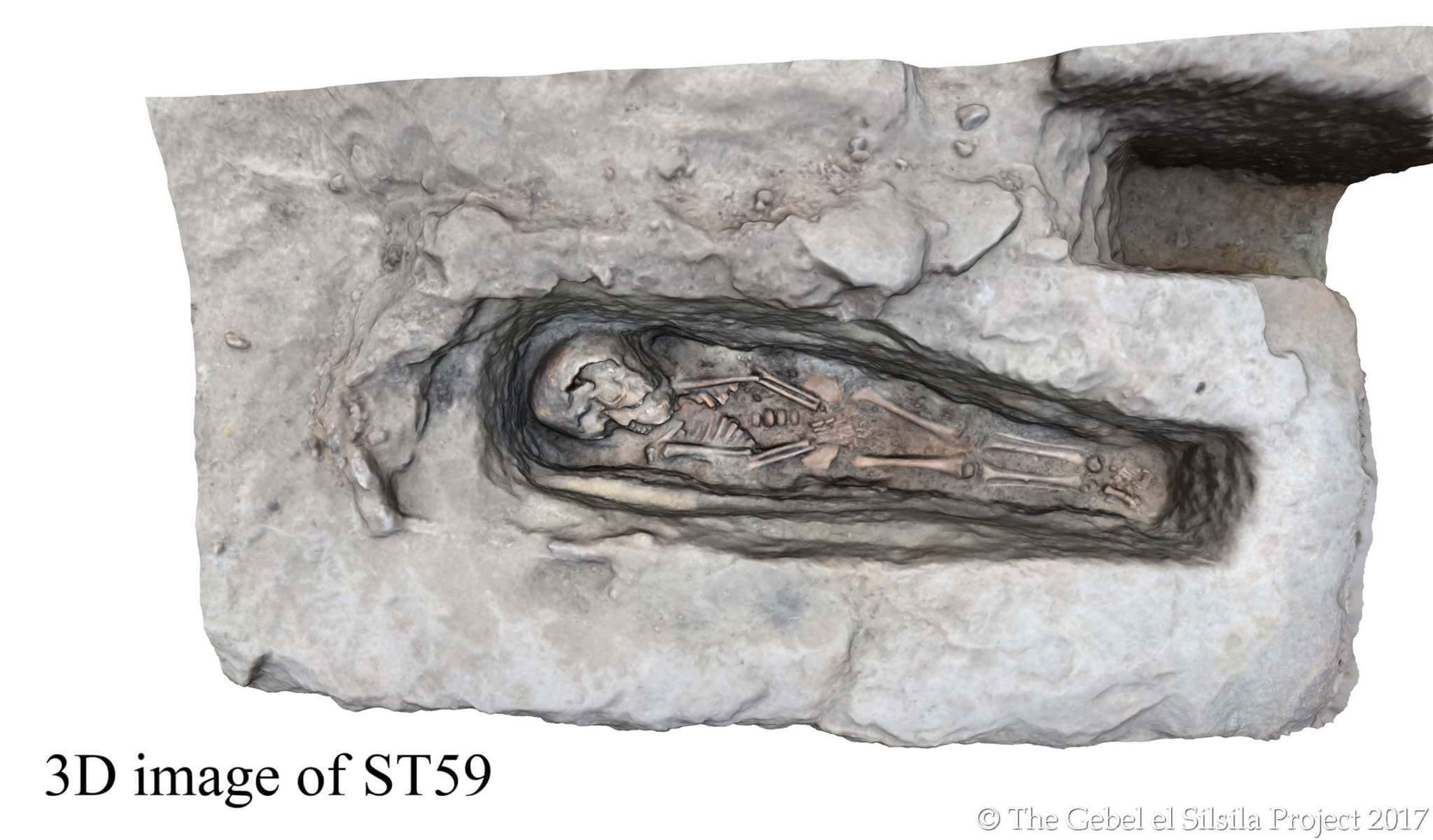4 Child Graves Discovered at Ancient Egyptian Site
The intact graves of four children, the youngest just 2 or 3, have been discovered at an ancient quarry site in Egypt.
Gebel el Silsila was a source of stone for temples and tombs in Upper Egypt during the Thutmosid period, which ran from the beginning of Thutmose II's reign in about 1493 B.C. to the end of Amenhotep II's reign in about 1401 B.C. Since 2015, 69 tombs have been discovered at the site, though most are empty, having been looted in antiquity. The newly discovered children's tombs are different. The burials are intact, and some of the graves contain artifacts like bronze bracelets, scarab amulets, and bowls and plates.
"The team is excited about continuing the osteological analysis of the remains, which will hopefully provide us with more specific details regarding nutrition and the general health and well-being of the children," lead archaeologists Maria Nilsson and John Ward of Lund University in Sweden wrote in an email to Live Science. [Gallery: See Images of the Ancient Children's Graves]
Social complexity
Gebel el Silsila was once thought to be a place where workers toiled and not much else happened — a site of "slaves and simple workers," Nilsson and Ward said. But the excavations on the east bank of the Nile River have revealed a much richer picture of life at the quarry. In 2016, the same researchers reported the discovery of 42 tombs, mostly empty, and a shrine. They've also discovered the carved statues of a man named Neferkhewe and his family. In total, Nilsson and Ward said, the team has excavated almost 30 of the 69 tombs discovered, including two belonging to infants.
This season, the archaeologists were investigating an area of the necropolis where they'd previously found two tombs. They discovered nine more, three of which contained the remains of children. The first grave appeared to hold a child who died between the ages of 6 and 9. The child's coffin was barely present, having been eaten by beetles and rotted over time due to the annual flooding of the Nile, but alongside the skeleton lay ceramic beer jars, wine vessels, bowls and plates. The child wore a set of bronze bracelets and had four scarabs attached to his or her left risk. A bronze razor was tucked by his or her skull, and a nefer amulet, a symbol of happiness and good luck, was found near the chest.
A second crypt held the remains of a tot, who was 2 or 3 years old. The child had been wrapped in linen and possibly placed in a wooden coffin, though the remnants of the coffin had long since been destroyed by insects. There was nothing buried with the child.
In a third tomb, the research team found the remains of a 5- to 8-year-old, wrapped in linen and laid to rest on a reed mat. Along with the child were buried three scarab amulets.
Get the world’s most fascinating discoveries delivered straight to your inbox.
Neglected burial
Finally, the researchers discovered a fourth tomb in a quarried area of the site. This child was also between 5 and 8 years of age, but seemed to have been buried without much care and was covered with spoil from the nearby quarry, the researchers said. This could indicate a social hierarchy at Gebel el Silsila, Nilsson and Ward said, with wealthier children receiving more lavish burials. The child buried in quarry spoil also showed more signs of injury than the others, a fact that requires further study, the archaeologists said.
The research team plans to further analyze the bones found in the graves, Ward and Nilsson said.
"The importance of these child burials is first and foremost that they provide the team with a possibility to study completely preserved inhumations, giving insights into the burial customs and pathological information, but they are also a strong indication of the existence and activity of complete families on site," they wrote to Live Science.
Original article on Live Science.

Stephanie Pappas is a contributing writer for Live Science, covering topics ranging from geoscience to archaeology to the human brain and behavior. She was previously a senior writer for Live Science but is now a freelancer based in Denver, Colorado, and regularly contributes to Scientific American and The Monitor, the monthly magazine of the American Psychological Association. Stephanie received a bachelor's degree in psychology from the University of South Carolina and a graduate certificate in science communication from the University of California, Santa Cruz.
 Live Science Plus
Live Science Plus






